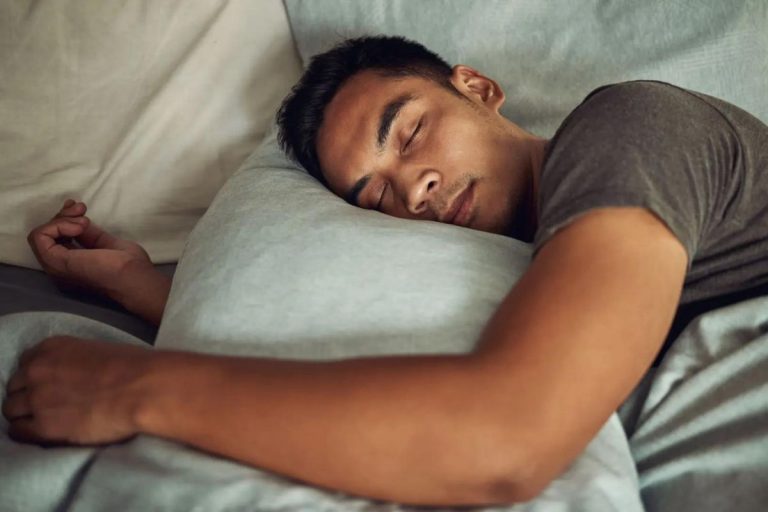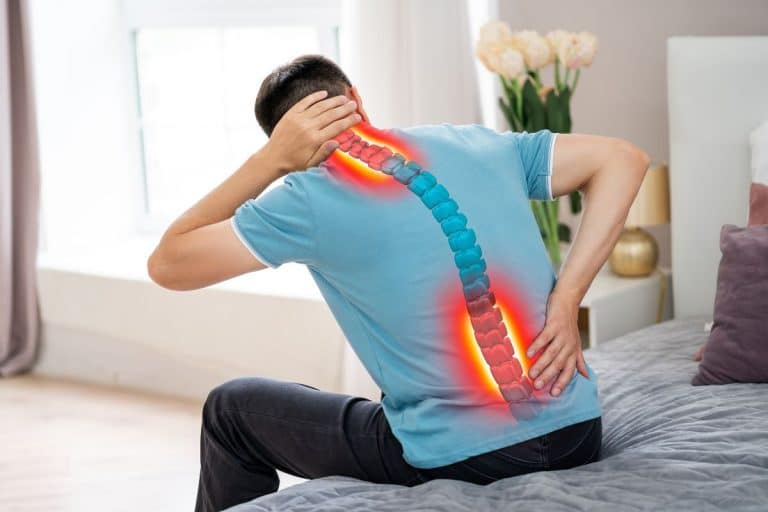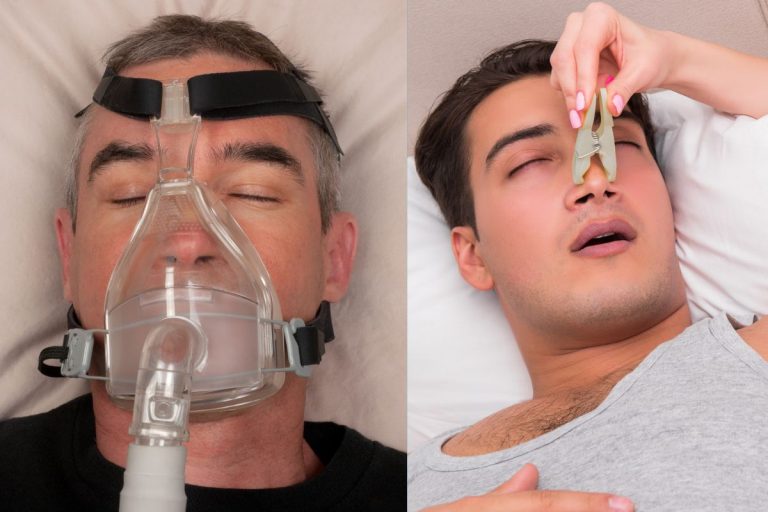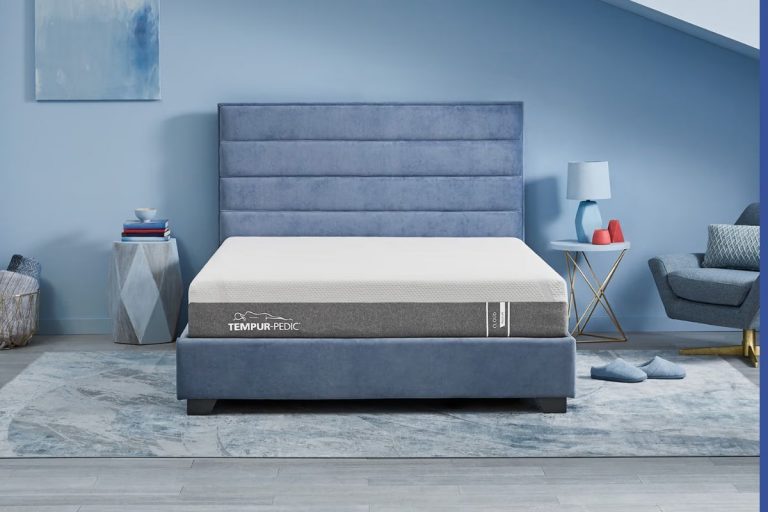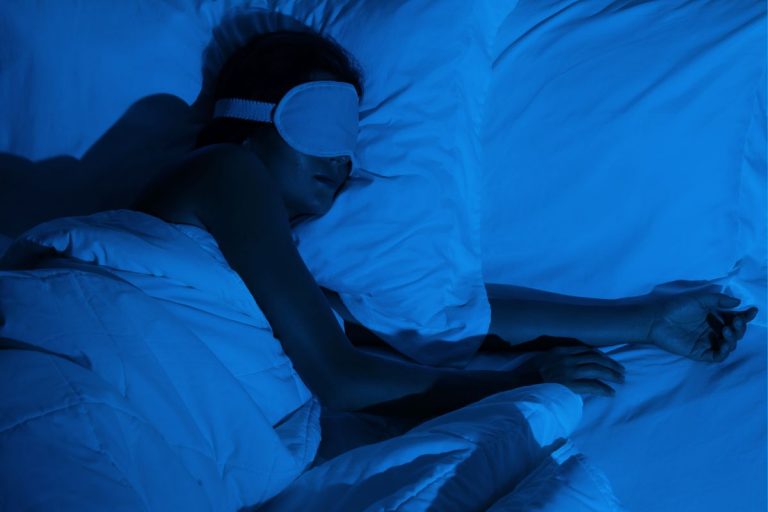Pain in the lower back is one of the most common complaints people have. Whether it was caused by an accident, an injury at work or in the gym, or it is a condition, sleeping with lower back pain can be a big problem.
The reason for the problem lies in the fact that it can be extremely hard to find a proper position in which the body pressure is off the lower back area. Because we all sleep usually on our backs, or at least on our sides, this problem seems unsolvable for many people.
Luckily, many scientists and researchers have tackled this topic, and there are many conclusions and solutions at our disposal nowadays. In the following paragraphs, we’re going to look at the best sleeping positions for people suffering from lower back pain. Let’s get started!
The Anatomy Of The Lower Back
To understand the pain in the lower back as well as the proper sleeping positions for the condition, it is important to understand the very anatomy of this area.
Your lower back is the area between the lowest rib and the upper buttock part. In this area, there is a natural inward curve, dictated by the spinal curve. This curve plays an important role in balancing out the weight and reducing the stress accumulation in the lower back and spine.
Moreover, the lower back is an accumulation of discs and joints, which, together with muscles and nerves, create a network of support for the whole body. However, these joints, discs, and nerves can also create big problems. Pull one muscle or dislocate one disc and you’ll be dealing with lower back pain for a long time.
The Causes of Lower Back Pain
The most frequent causes of lower back pain are injuries, muscle strain slipped or dislocated disc as well as ligament and joint problems. When it comes to lower back pain, the most common cause is herniated or slipped disc.
People with such conditions often experience pain and numbness in the lower back area, or particularly on one side of the body. The problem with a herniated disc is that it causes extra pressure on the other discs as well as muscles and nerves.
Those who are diagnosed with a slipped disc often don’t know what caused the injury in the first place. The possible causes could be heavy lifting, doing work in a bent or slouched position as well as other injuries caused by a car accident, falling, etc.
Other causes of lower back pain can be health conditions, like fibromyalgia (affects both upper and lower back, extreme pain and mood disorder), sciatica (a painful condition caused by the sciatic nerve), and scoliosis (spinal deformity affecting lateral curvature, spinal discs, and bones).
These conditions are often accompanied by sleep anxiety, general restlessness, and sleep disorders, which can make the pain worse, and harder to find the right sleeping position.
Best Sleeping Positions To Fight Lower Back Pain?
To make sleeping more comfortable during the lower back pain problems, here are some of the best sleeping positions you should try out. We must point out that you need to consult with a medical professional about these sleeping positions regarding a particular lower back condition you may have.
A medical professional will advise you whether or not you should sleep in these positions. We do not want you to create more problems for your back, so be careful when trying these out.
Supine position – sleeping with pillows under the knees
The supine position implies lying horizontally on the back. In this position, your arms are in a parallel position to your body and the legs are stretched out.
Now, because you’re dealing with lower back problems, it is recommended to put one or two pillows underneath your knees.
This way you will remove the pressure from the lower back area, the hips, the spine, neck, and shoulders. The knees on the pillows will serve as additional support and a stabilizer of your back and straight spine alignment. The supine position is generally recommended for people suffering neck, shoulder, and back pain, but is also observed as the best sleeping position in general.
Read More: Sleeping with a Pillow Under Your Knees: What You Need to Know
Sleeping on the side – pillows between the knees
Sleeping on the side can be good for some people, while for others it can create problems with shoulders and neck. However, if done correctly, sleeping on the side can help deal with all kinds of pain, especially lower back pain.
To keep the spine and back aligned, it is important to place a pillow between the knees. This helps the back create a natural alignment to remain pain-free. You can also place a rolled-up towel under the neck to fill the neck curve, and a pillow under the arms to relieve the pressure from the shoulders.
Read More: The Best Sleeping Positions For Shoulder Pain
Prone position – pillow under the hips
The prone position implies sleeping on the stomach. This position is usually considered to be the worst sleeping position, as there is pressure and tension on all pressure points in the body.
However, if done correctly, sleeping in the prone position can help with lower back pain. The correct way to sleep in the prone position is by placing a pillow underneath the hips. The pillow needs to be soft and low to avoid alignment issues. The pillow needs to be thick enough to lift your hips a little bit and relieve the pressure from the lower back.
In this position, make sure to place your hand next to the head pillow, in a 90-degree angle, to avoid shoulder and neck pain.
Sleeping in the fetal position
Fetal position is generally one of the most common sleeping positions. It resembles the side sleeping position. However, the main difference is the fact that the legs are pushed towards the chest, or are curled up.
To avoid further issues with this position, and to help the lower back, it is important to keep the spine straight, not to curl the neck, and to keep the arms in front of the body.
Also, make sure to choose to sleep on your left side. When it comes to the fetal position, sleeping on the left side is better for breathing and not putting pressure on shoulders and organs.
Sleeping in a reclined position
It is often recommended that people who experience regular back pain should sleep in a recliner. However, not many people do have lift chair recliners.
Luckily, you can either buy a recliner or purchase a bed chair pillow or seat cushion to get the same effects. Sleeping in a reclined position removes the pressure from the lower back.
Recliner chairs usually have built-in pillows for the lower back. So when in a reclined position make sure to place a pillow in the lower back area. You can also invest in a mattress that allows parts to be lifted into a reclined position.
Other Tips for Better Sleeping with Lower Back Pain
- Always make sure your back, spine, neck, and hips are aligned. This means that the body won’t deal with unnecessary pressure on different pressure points. Your lower back will also be free of pressure and tensions.
- Always align your ribs and pelvis, especially when sleeping on the side. This will allow natural alignment in the body; if you need extra support make sure to place a pillow or cushion under the waist.
- Make sure to invest in a proper mattress. Your mattress mustn’t be too firm or too soft. Choose a mattress that is medium-firm, that provides support to all pressure points as well as ensure natural alignment of the neck, back, and the legs.
- Make sure to do exercises for the lower back. A simple leg lift exercise, stretching, walking or swimming can all help decrease the pain in the lower back. By exercising you will also ensure a good night’s sleep.
- Make sure to always use pillows for extra support. When dealing with a painful body part, it is important to provide support for it, as well as the rest of the body. Purchase cushions, extra pillows, or a body pillow.
Final Words
Lower back pain is a common issue, but it doesn’t mean that it is normal. Alongside the sleeping position adjustment, when dealing with lower back pain regularly it is important to talk to a medical professional. A doctor will know exactly what kind of treatment you need as well as which sleeping position would suit your problems.
Do not consider the abovementioned information as a definitive solution; consult with a doctor for more information and approval of our recommendations.
